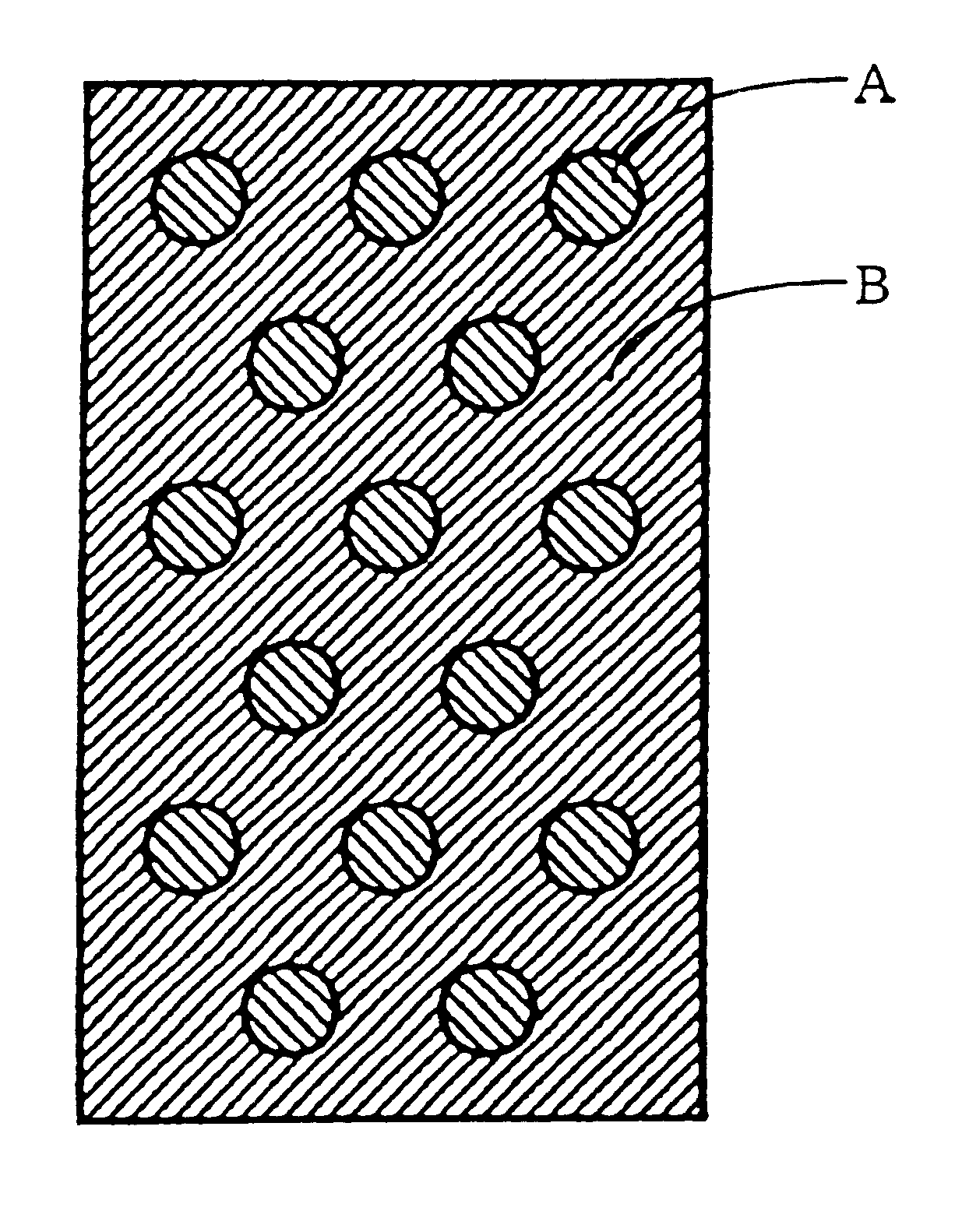Apparatus for producing deionized water
- Summary
- Abstract
- Description
- Claims
- Application Information
AI Technical Summary
Benefits of technology
Problems solved by technology
Method used
Image
Examples
example 1
A sulfonic acid type cation exchange resin (Diaion SK1B: tradename manufactured by Mitsubishi Chemical Corporation) having an average particle size of 620 .mu.m and an ion exchange capacity of 4.2 meq / g dry resin and a quaternary ammonium salt type anion exchange resin (Diaion SA10A: tradename manufactured by Mitsubishi Chemical Corporation) having an average particle size of 540 .mu.m and an ion exchange capacity of 3.7 meq / g dry resin were dried and mixed in a ratio of cation exchange resin / anion exchange resin of 50 / 50 (volume ratio in dry state) to prepare a mixture having an ion exchange capacity ratio of 60 / 40.
3 wt % of a linear low density polyethylene (Affinity SM-1300: tradename manufactured by Dow Chemical Company) was mixed with the above prepared mixture, and the mixture was kneaded at 120 to 130.degree. C. The kneaded material thus obtained was heat-formed by a flat plate press at 130.degree. C. to obtain a sheet-like porous ion exchanger having a thickness of 6 mm.
A ca...
example 2
The same cation exchange resin and anion exchange resin as used in Example 1 were respectively dried, and 3 wt % of a linear low density polyethylene (Affinity SM-1300: tradename manufactured by Dow Chemical Company) was mixed with each of the above ion exchange resins, and each mixture was kneaded at 120 to 130.degree. C. Thereafter, each of the kneaded cation exchange resin and the kneaded anion exchange resin was heat-formed by a flat plate press at 130.degree. C. to obtain a sheet-like cation exchanger A having a thickness of 6 mm and a sheet-like anion exchanger B having a thickness of 6 mm. Thereafter, the cation exchanger A and the anion exchanger B were punched, and the punched disk-like cation exchanger A having a diameter of 2 cm was fixed into the punched anion exchanger B in such a manner as illustrated in FIG. 1 to prepare a porous ion exchanger having a dot-like pattern.
Each sheet of the above prepared porous ion exchangers was accommodated in each of the demineralizin...
example 3
The same ion exchange resins as used in Example 1 were dried, and the dry cation exchange resin and the dry anion exchange resin were mixed in a weight ratio of 8 / 2 (cation exchange resin / anion exchange resin), and a sheet-like first porous ion exchanger was prepared in the same manner as in Example 1. Thereafter, an anion exchange resin and a cation exchange resin were mixed in a weight ratio of 8 / 2 (anion exchange resin / cation exchange resin), and a sheet-like second porous ion exchanger was prepared in the same manner as in Example 1. Thereafter, by using the above prepared two porous ion exchangers, a porous ion exchanger having such a dot-like pattern as shown in FIG. 1 was prepared in the same manner as in Example 2.
Each sheet of the above ion exchangers was accommodated in each demineralizing compartment in the same electrodialyzer as used in Example 1, and water is supplied to swell the above ion exchangers to adjust a pressure in a gap to an ion exchange membrane to about 2...
PUM
| Property | Measurement | Unit |
|---|---|---|
| Weight | aaaaa | aaaaa |
| Weight | aaaaa | aaaaa |
| Equivalent per mass | aaaaa | aaaaa |
Abstract
Description
Claims
Application Information
 Login to View More
Login to View More - R&D
- Intellectual Property
- Life Sciences
- Materials
- Tech Scout
- Unparalleled Data Quality
- Higher Quality Content
- 60% Fewer Hallucinations
Browse by: Latest US Patents, China's latest patents, Technical Efficacy Thesaurus, Application Domain, Technology Topic, Popular Technical Reports.
© 2025 PatSnap. All rights reserved.Legal|Privacy policy|Modern Slavery Act Transparency Statement|Sitemap|About US| Contact US: help@patsnap.com


